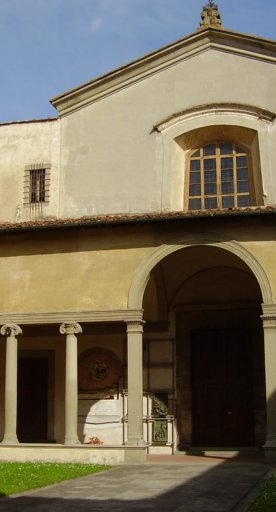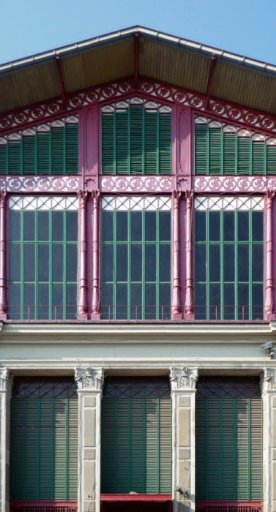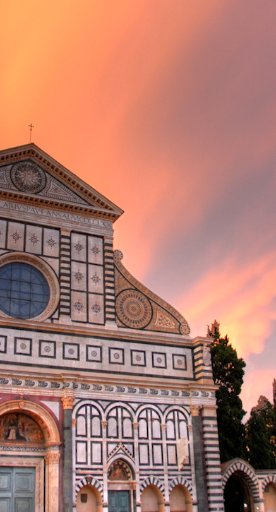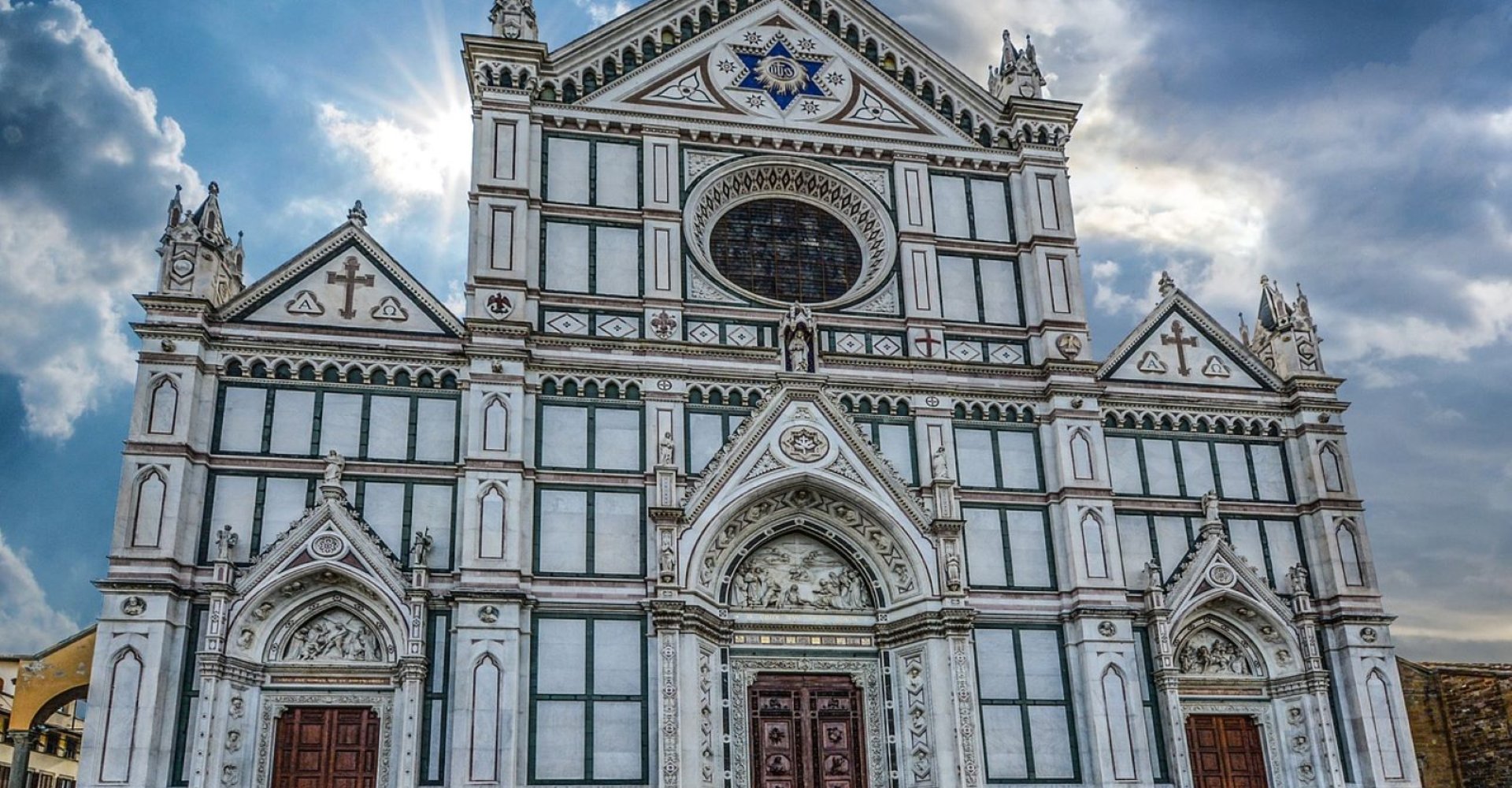
Monumental complex of Santa Croce
One of the symbolic places of Florence and its history. It houses precious works of art, Renaissance masterpieces and the tombs of the Greats
The Monumental Complex of Santa Croce, overlooking the square of the same name, is a symbol of Florence’s history and a treasure chest of beauty that holds within it some of the most important works of art history, created by the greatest artists: Cimabue, Giotto, Taddeo and Agnolo Gaddi, Orcagna, Donatello, Rossellino, Brunelleschi, Bronzino, Vasari, Canova, Bartolini.
The Complex consists of the Basilica of Santa Croce, the Sacristy and the Novitiate, the two Cloisters (Great Cloister and Brunelleschi Cloister) with the Pazzi Chapel, the Refectory and the Cerchi Chapel.
Basilica of Santa Croce
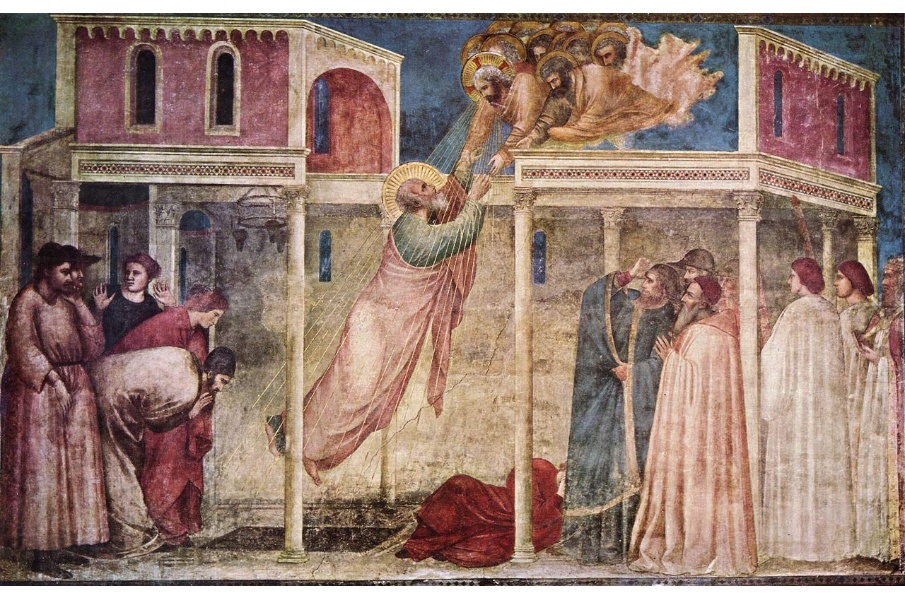
With its impressive Gothic architecture, stunning frescoes, altarpieces, precious glass windows, numerous sculptures, the Basilica of Santa Croce represents a fundamental page in the history of Florentine art from the 13th century onward.
This monumental Franciscan church was built starting from 1295 on a design attributed to Arnolfo di Cambio, the most important architect of the time (the Cathedral of Santa Maria del Fiore and Palazzo Vecchio bear his signature, as well as numerous other buildings in the city).
The church was modified several times over the centuries, acquiring new symbolic connotations over time: from a Franciscan church to a religious building with a civil function for the great families and corporations of Medicean Florence, from an artistic workshop and laboratory to a theological center. The interior underwent numerous renovations, beginning with the 16th-century ones carried out by Giorgio Vasari at the behest of Cosimo I de’ Medici: the partition separating the clergy from the people was torn down, the frescoes on the side walls were whitewashed and large stone altars were erected.
Further modifications were made over the centuries to accommodate the funerary monuments of illustrious figures (Machiavelli, Galileo, Michelangelo, Foscolo, Rossini) that have earned Santa Croce the name “Temple of the Italian Glories”.
In the Main Chapel, which dominates the main nave, you can admire the extensive cycle with the Leggenda della Vera Croce (Legend of the Cross), work by Agnolo Gaddi (dated around 1388-1390).
The Peruzzi Chapel, built during the first phase of the church’s construction and patronage of the wealthy and influential banking family of the same name, was decorated by Giotto around 1310 with Stories of St. John the Baptist and St. John the Evangelist, to whom the chapel is dedicated.
Later (1317-1321 circa) Giotto worked on the decoration of the Bardi Chapel, dedicated to St. Francis and frescoed with stories of the saint’s life (the chapel is currently being restored).
In this non-exhaustive list of masterpieces preserved inside the Basilica (by such names as Brunelleschi, Michelozzo, Della Robbia, Bronzino, Vasari), it is worth mentioning the Annunciazione Cavalcanti (Cavalcanti Annunciation) by Donatello (1435 circa), in gilded and partly polychromed sandstone, positioned in the right aisle, one of the rare works by the sculptor to still be in its original location.
Among the funerary monuments, the one for Vittorio Alfieri by Canova (1810) marks the beginning of the complex’s transformation into the Pantheon of Artists.
As in many Florentine basilicas, the facade was originally unfinished, in exposed pietraforte. Its present appearance is due to the completion work initiated in the mid-19th century, on a project by architect Niccolò Matas.
The Sacristy and the Novitiate
The right transept of the basilica leads to the Sacristy and the Novitiate, the area once reserved for those preparing to enter the Order. The Sacristy is one of the oldest examples in Florence of a monumental sacristy, heavily modified over the centuries.
This area was built as part of the reconstruction work undertaken following the fire in 1423, in which the friars’ dormitory had been destroyed. The project is probably work of Michelozzo (1434-1445), the funding of Cosimo de’ Medici. The Novitiate Corridor, the Medici Chapel and the Well Room (Sala del Pozzo) are also part of it.
In 2013, the Crucifix of Cimabue, the symbolic work of the 1966 Florence flood, was placed high up in the Sacristy. Subsequently, a series of works were placed in this area of the monumental complex that, due to their size and fragility, would be difficult to move in the event of a flood (in fact, the Novitiate is located in an elevated position and is therefore more protected).
The Cloisters and the Pazzi Chapel
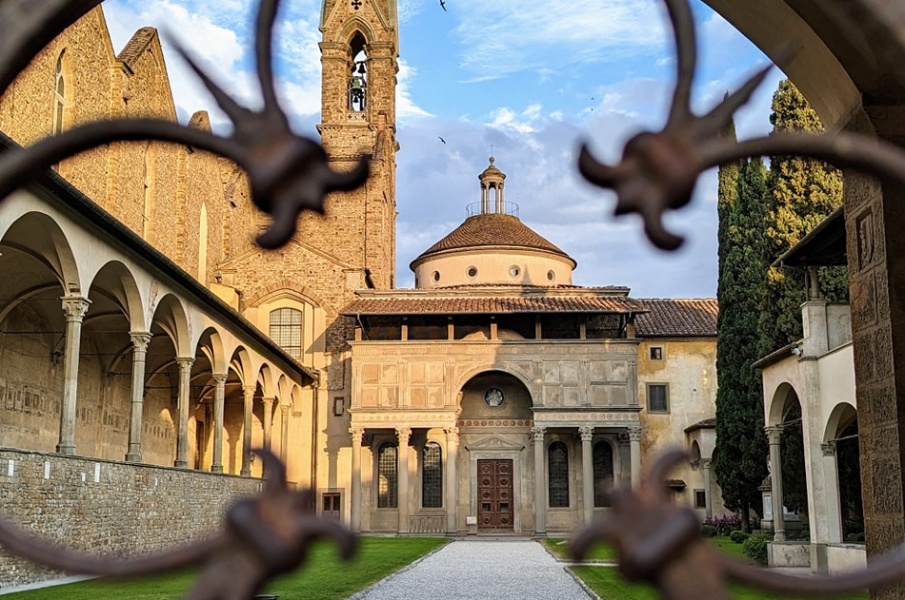
The different rooms of the monumental complex are connected by two cloisters.
The first, the oldest, was initially also used as a burial ground and for this reason called the “cloister of the dead”. Over the centuries it has undergone different transformations (in the second half of the 1800s, for example, a central building that divided it into two parts was torn down).
The second cloister, also known as the “Brunelleschi cloister”, was probably designed by Bernardo Rossellino for the very wealthy banker and patron Tommaso Spinelli.
The first cloister houses the Pazzi Chapel, one of the earliest and most representative pieces of Renaissance architecture, with spaces defined by precise proportional relationships. It was built on commission by Andrea de’ Pazzi and designed by Filippo Brunelleschi, who supervised the work until his death in 1446. Construction prolonged, the project was partly modified (for example, with the addition of the portico on columns and central arch) and the work was finally halted in 1478, when the Pazzi family was banished from Florence following the conspiracy against the Medici.
Twelve glazed terracotta roundels with Apostles, made by Luca and Andrea della Robbia, can be seen on the inside, while the four polychrome terracotta roundels with the Evangelists are attributed to Brunelleschi.
The small dome is frescoed with the constellations that were present in the Florentine sky on July 4, 1442.
The Refectory
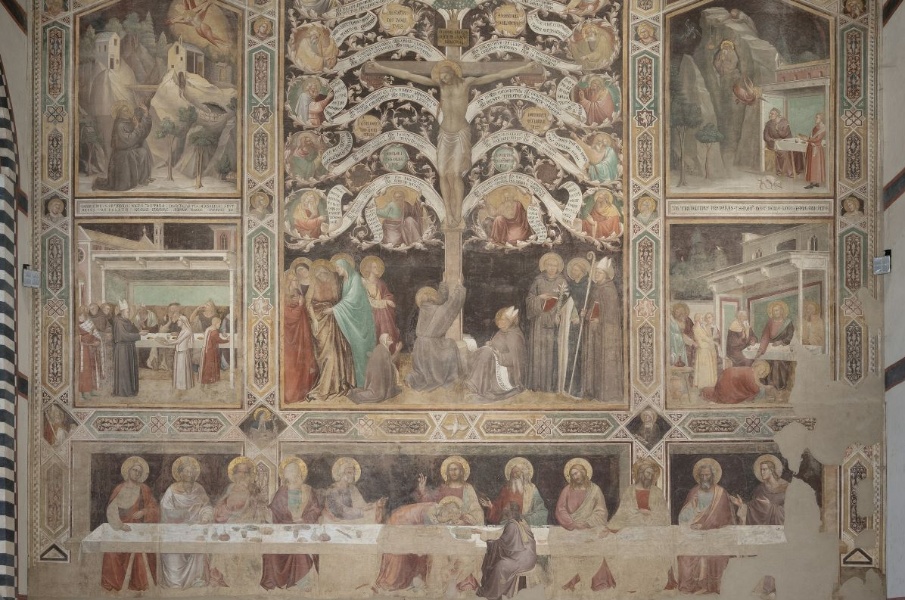
The ancient refectory, built in the first half of the 14th century, is a large rectangular room with a trussed roof. On the back wall, the fresco by Taddeo Gaddi recalls in some convivial scenes the function of this space in the convent.
During the 19th century, the Refectory was put to various uses: from a carpet factory to a public office warehouse to a storehouse for works of art. In 1900 the first nucleus of the Opera Museum was opened here and over time numerous works were transferred there, such as San Ludovico di Tolosa (Saint Louis of Toulouse) by Donatello; the fragments of the great fresco with Trionfo della morte, l’Inferno e il Giudizio Universale (Triumph of Death, Hell and the Last Judgment), painted by Andrea Orcagna around 1345 in the right nave of the church; the panel with Ultima cena (The last supper) by Vasari, restored after the extensive damages suffered from the flood.
Information on accessibility: santacroceopera.it






